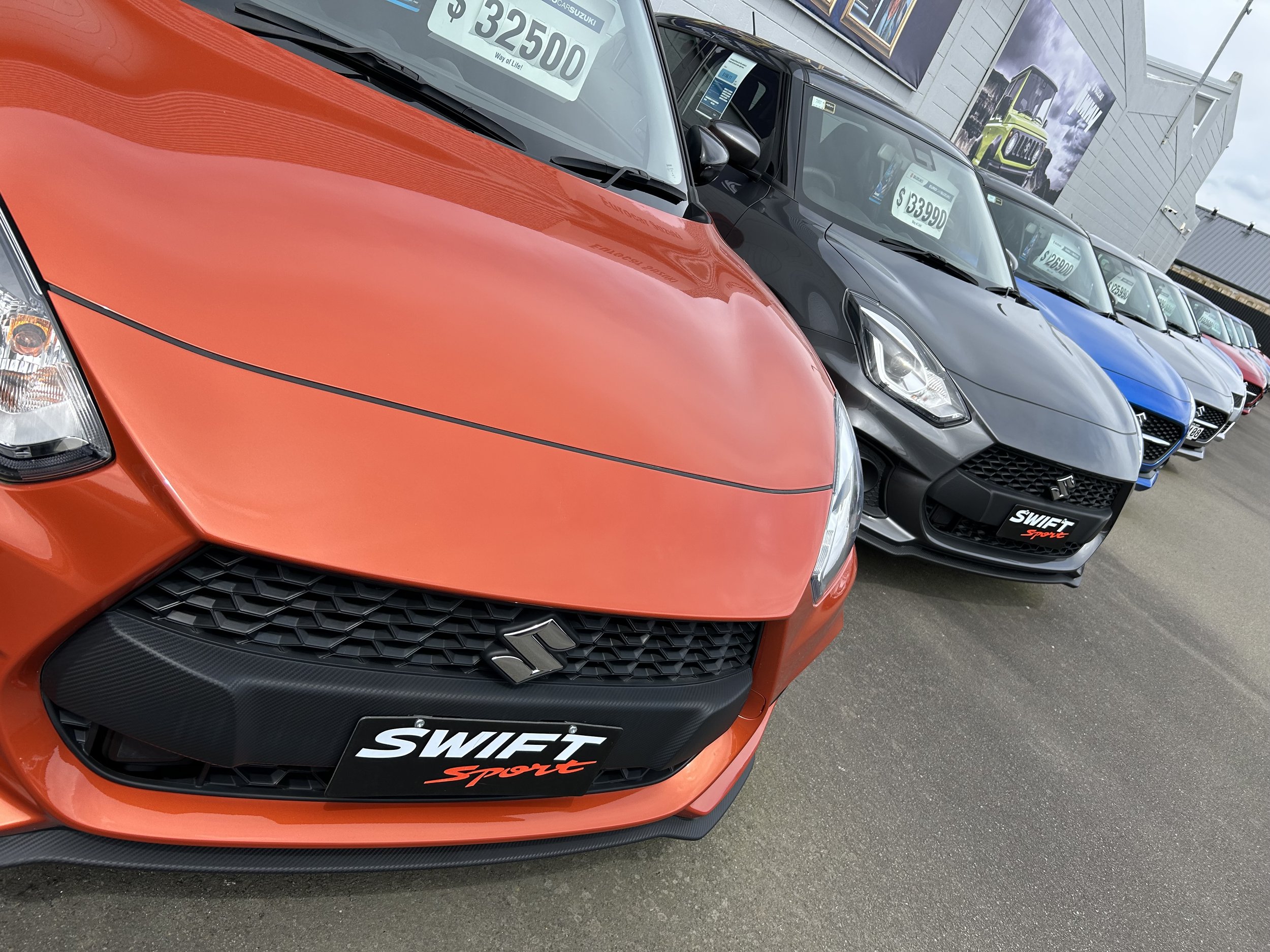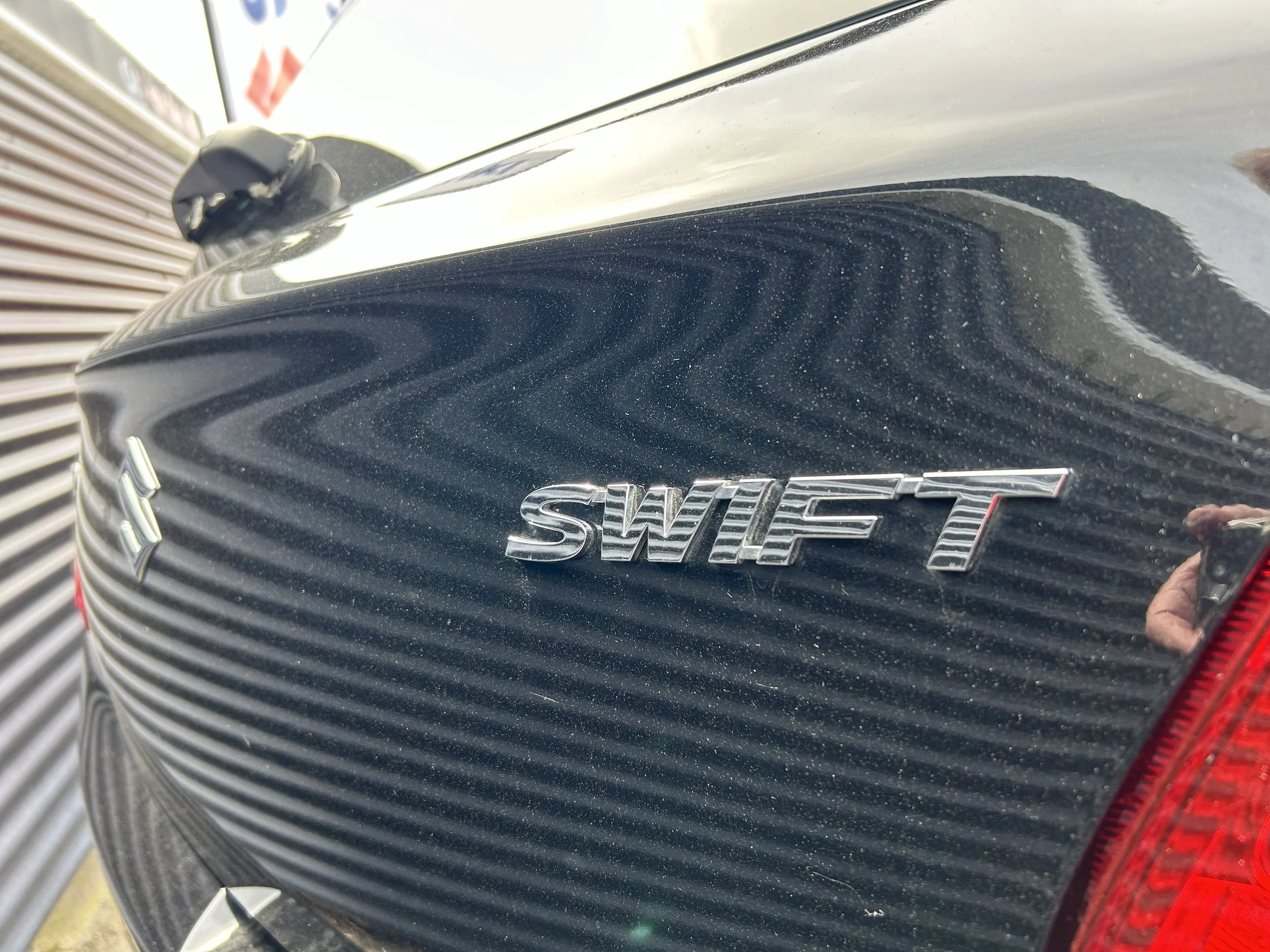CO2 penalty challenge remains for small car specialist
/Clean Car Standard, the environmental impost new car buyers probably don’t know about, is being reviewed by Government. Suzuki is pleased.
LEARNING that the Clean Car regulation so far left untouched will now also be reconsidered under urgency has been welcomed by the brand that specialises in small cars.
Acknowledgement from transport minister Simeon Brown of intent to review the Clean Car Standard - a CO2 hit on cars that distributors have to heft - is considered good news by Suzuki New Zealand.
Regardless that the Wanganui make’s petrol product has good public perception as being especially fuel frugal, it is nonetheless set to see that fare hit by CO2 penalties that will increase over the next few years.
Invariably, those costs - running ultimately to several thousand dollars, in instance of the brand’s most popular car, the Swift - would pass on to consumers.
CCS is akin to the Clean Car Discount that delivered rebates for electric and low emissions cars and penalties on high emissions types, but hits distributors at point of vehicles’ arrival here.
A report quoting Brown as saying a review he intended at mid-year will now occur far more imminently came out the night before Suzuki NZ briefed media about the past year and it’s views of the landscape ahead.
The operation’s automobile general manager Gary Collins says whatever happens, his hope is for a smoother ride in 2024 than his brand endured in the second half of 2023. First when CCD revised in July and then in the post October general election period, when it was patently a goner.
“We were on a roller coaster flipping between CCD rebates applying across much of our fleet to no rebates and some penalties,” Collins said in reflection of the July revision of rebates and penalties, which took some Suzuki product out of the rebate zone and into the penalty area.
“So much change in a short period can’t be easy for customers to fully understand. So combined with the impacts of the general election, high cost of living, and low economic confidence, many of our customers went into hiatus.”
On reflection? “We had a period where the programme worked in our favour and a time when it certainly did not. We have mixed feelings about the abandonment.”
“It did cause a considerable amount of confusion for the public as there was little information provided to the consumer by the (new) Government on its function and the timings of when changes would occur. This was largely left up to the industry and media.
“The aftermath of the CCD programme is that the market has become far more environmentally conscious in their decision-making.”
Fuel efficiency and emission levels are expected to remain a strong driver.
SNZ hopes for 2024 to be a better year than 2023, which began well, but fell apart in the second half, with result the make achieved 6929 registrations - Swift, the top seller, claiming 3922 of those - well down on the record 8494 of 2022. It was a bitter blow.
“2022 was a record year for us and we were on track to exceed this at the halfway point.”
Collins has noted considerable shifts in the market over the last 12 months, the most noticeable being Mitsubishi dropping from 14.5 percent market share to nine percent and Nissan and Mazda dropping further to under three percent. Suzuki, by comparison, is holding steady with five percent for the past three years, leaving it the sixth most popular new car brand.
Says Collins: “This stability in an ever-changing market shows we are a brand with strong loyalty. We have dominated the two segments we compete in – the light passenger and small SUV sectors.
“We also see, that with a tightened economy, customers that were originally looking at larger SUVs may opt for a smaller, more affordable option. We have experienced it often over the years that as fuel prices rise, many customers downsize to decrease their cost of living.”
SNZ’s projected outlook for the first quarter was positive. “We expect to see an upward trend from January through to March, and it is encouraging that many of our dealers have started 2024 with much better enquiry and sales levels.
“Suzuki probably tends to have a slightly more conservative customer base than some brands, but we are already seeing a bounce back in sales.”
CCS was a strong driver for distributors to import low-emission vehicles, but the policy of annually reducing CO2 targets with weight being part of the formula made it hard to live with.
This year’s targets reduce by 11.1 grams per vehicle against last year’s. For an average-weight vehicle this means a target of 133.9 grams per kilometre.
“But for a lightweight vehicle under 1200kgs, which is most of our range, the target is 113.6 grams per kilometre.
“So a Swift GL auto which is one of the most fuel-efficient internal combustion vehicles on the market, and more efficient than some hybrid models, will incur eight grams of penalty or $360 of fees that Suzuki NZ incur at time of pre-delivery inspection.
“While not ideal, these sorts of values are manageable.”
The shift in 2025 is where the heat starts to come on, he says.
“The targets shift down another 21.3 grams per kilometre. While the penalties go up 50 percent. So Swift GL auto moves to $1957 per vehicle.
“So all distributors must have some BEV (fully electric) products from 2025 onwards to help offset the penalties incurred on ICE and hybrid models. This coincides with Suzuki’s plans to add BEV models to the line-up.
“The 2026 and then 2027 targets are among the toughest in the world so the challenge is to have products developed in time.
“There is discussion about whether our targets should be bought back into line with Europe to match model plans with a major market.”
For that reason, the industry will be closely following the CCS review.
“All brands are carefully planning their model line-ups, not only for achievement of current CCS targets, but also to build credits for future years.
“And our model line-up has altered to minimise penalties with the move to hybrid powertrains for Vitara and S-Cross, along with expected improvements in emissions from the new Swift, strengthening our overall emission position.
“We want to slowly transition our customer base up in price and technologies as not all our customers can afford, or necessarily want an electric vehicle.”
Collins said some distributors have “jumped straight into being high-priced, high-technology brands. We would imagine that many have felt they have moved too quickly given the removal of the Clean Car Discount programme.”


















